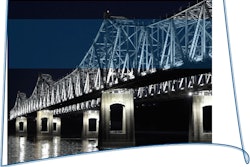
That’s certainly true in the context of America’s road and bridge infrastructure.
But, just like in business, spending isn’t the solution to all problems and when the money’s not there, you solve the problems you can.
A reminder of this came in a July press release from the American Road and Transportation Builders Association (ARTBA) about that group’s testimony in front of a Congressional subcommittee tasked with implementing the RAPID Act of 2013. The new act seeks to streamline the government review process for commercial development in much the same way transportation infrastructure projects have been streamlined over the years.
The U.S. House Judiciary Subcommittee on Regulatory Reform, Commercial and Anti-Trust Law asked ARTBA to share the lessons learned from the transportation industry’s long campaign to bring rational restraint to the environmental review process for transportation projects.
First Vice-Chair Nick Ivanoff, president and CEO of design firm Ammann & Whitney, gave the committee a history of streamlining regulatory review in transportation.
“Reducing the amount of time it takes to deliver transportation improvements was first addressed in the [1998] TEA-21 bill which concentrated on establishing concurrent – as opposed to sequential – project reviews by different federal agencies,” Ivanoff said. “While this improvement was a step in the right direction, it had limited impact as concurrent reviews were discretionary rather than mandatory.”
Seven years later, SAFETEA-LU further enhanced the review process by providing lead agency status for the U.S. Department of Transportation, giving the DOT authority to request action by non-transportation agencies and establishing limitations on when lawsuits can be filed against projects.
Like SAFETEA-LU, the most recent transportation bill, MAP-21, was a disappointment in terms of funding, but Ivanoff pointed out that it advanced project delivery reform by providing mandatory deadlines for permitting decisions and financial penalties for agencies that do not meet them. It also created new classes of “categorical exclusions” that allow projects with minimal environmental impacts to avoid unnecessary multi-year reviews.
Fifteen years and three transportation bills later, Congress and the industry are still refining the project streamlining process. Ivanoff told the subcommittee that the challenge now is to ensure the timely and full implementation of MAP-21’s project delivery provisions. “Simply giving federal agencies the ability to complete regulatory reviews in a more efficient manner in no way guarantees that authority would be utilized,” Ivanoff told the committee.
By streamlining the review process, industry and government have made the process more predictable and reduced the amount of time public money is tied up in red tape and not working for the taxpayer.
 [email protected]
[email protected]Yes, many of us would rather have appropriate funding, if it came down to a choice between the two. But it’s not a choice. It is instead an example of the transportation industry’s lobbyists taking a global view of what the industry and the country needs and achieving important goals even when it’s not possible to improve investment levels.












